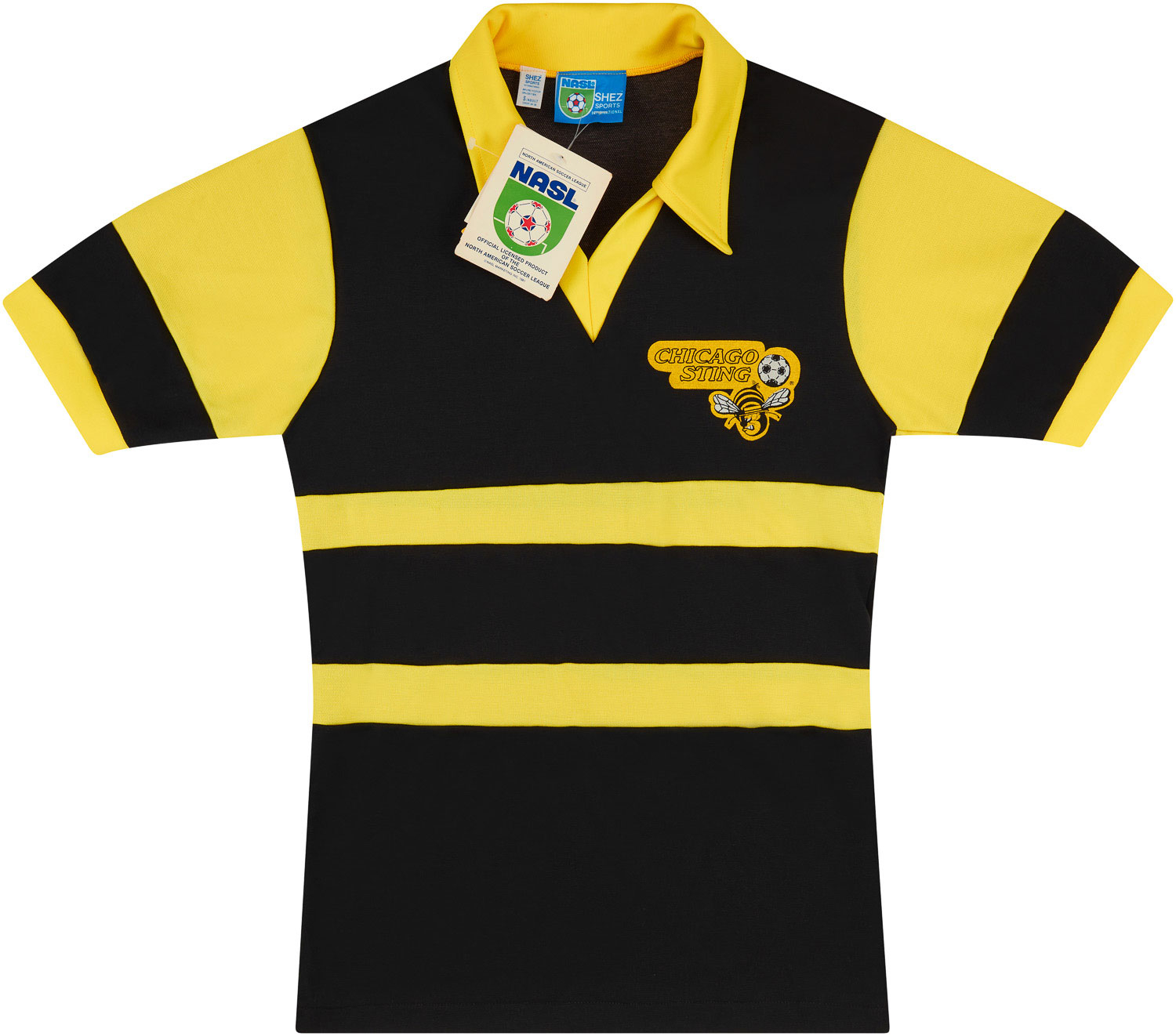Chicago Sting
Introduction The Chicago Sting was a professional soccer club that emerged as a pivotal part of the North American Soccer League (NASL) during the 1970s and 1980s. Established in 1975, the club made a mark not just within the local Chicago sports scene but also in the broader landscape of American football history. Known for […]
1978-79 Chicago Sting Away Shirt S
148.99£ - ca: €176
1980s Chicago Sting Admiral Training Shirt - 9/10 - (M)
118.99£ - ca: €140
1980s Chicago Sting Admiral Training Shirt
118.99£ - ca: €140
1980s Chicago Sting Admiral Training Shirt - 9/10 - (S)
118.99£ - ca: €140
1980s Chicago Sting Admiral Training Shirt - 9/10 - (M)
118.99£ - ca: €140
1980s Chicago Sting Admiral Training Shirt - 9/10 - (L)
118.99£ - ca: €140
1980s Chicago Sting Admiral Training Shirt - 9/10 - (XS)
106.99£ - ca: €126
1980s Chicago Sting Admiral Training Shirt
106.99£ - ca: €126
Introduction
The Chicago Sting was a professional soccer club that emerged as a pivotal part of the North American Soccer League (NASL) during the 1970s and 1980s. Established in 1975, the club made a mark not just within the local Chicago sports scene but also in the broader landscape of American football history. Known for its passionate fan base and competitive spirit, the Chicago Sting cultivated a unique identity in a country where soccer was still vying for recognition. The club’s vibrant atmosphere and entertaining style of play contributed to an era that would leave lasting memories among supporters and shape the future of soccer in the U.S.
Club History
The Chicago Sting was founded in 1975 as a part of the NASL’s expansion aiming to popularize soccer in the United States. The club played its home games at the iconic Soldier Field, a venue deeply rooted in Chicago’s sporting culture. Early struggles turned into success as the Sting established an identity characterized by high-energy play and strong community ties. The late 1970s and early 1980s mark key periods in the club’s history, where they became known for their competitive nature and the ability to attract talent from both domestic and international backgrounds.
After a few tumultuous initial seasons, the club’s fortunes began to rise under the leadership of head coach Willy Roy, with whom they enjoyed significant breakthroughs in the early 1980s. In 1981, the Sting advanced to the NASL playoffs for the first time, igniting hope and excitement among their fan base. Their memorable journey in the league had its ups and downs, but it was clear that the Chicago Sting was cementing its legacy in American soccer.
Achievements
Throughout its existence, the Chicago Sting amassed numerous achievements within the NASL and beyond. The pinnacle of the club’s success came in 1981 when they clinched the NASL championship. In a compelling playoff series, they showcased resilience and tactical prowess, ultimately defeating the New York Cosmos, a powerhouse of the league, solidifying their place in football history. The Sting’s championship run was powered by star players such as midfielder Greg Villa and forward Gerd Müller, who made significant contributions on the field.
In addition to their championship glory, the Sting also reached the NASL playoffs in several other seasons, consistently proving themselves as a competitive franchise. The club participated in international competitions, notably competing in the CONCACAF Champions Cup, which further highlighted their ambition beyond domestic success. The Sting’s lasting impact on American soccer is evidenced by their role in paving the way for the future of soccer leagues in the USA, creating a foundation upon which Major League Soccer (MLS) would later build.
Significant Players and Matches
The Chicago Sting featured several prominent players whose talents and contributions greatly influenced the club’s trajectory. Among the most notable were the legendary Gerd Müller, a former World Cup-winning striker who left an indelible mark during his brief stay with the Sting. His ability to find the back of the net drew fans to the stadium and helped elevate the team’s profile during the NASL’s golden years.
Another significant figure was midfielder Greg Villa, who played a crucial role in both setting up goals and scoring during the Sting’s playoff runs. Matches against rival teams, especially against the New York Cosmos and San Jose Earthquakes, became iconic due to their intense rivalries, showcasing the passionate nature of Chicago’s soccer culture. The 1981 championship match against the Cosmos remains a historic highlight that encapsulates the Sting’s fighting spirit and determination.
Cultural Impact
The Chicago Sting played a crucial role in promoting soccer culture in Chicago and throughout the United States. During the NASL’s peak, the club attracted a diverse fan base, including families, young school children, and immigrant communities who resonated with the sport’s appeal. The Sting became a source of pride for many, introducing soccer to audiences who may have been less familiar with the game. Their marketing initiatives, community outreach, and open practices helped foster a dedicated following and a sense of belonging among fans.
Besides their on-field successes, the Sting’s contributions to the local culture extended to various initiatives, such as youth soccer clinics and community events, helping to inspire the next generation of players. The club’s legacy is reflected in its enduring local demographic, with many former fans becoming coaches and leaders in youth soccer programs across the city.
Conclusion
The Chicago Sting carved out an important niche in American football history, showcasing the potential for soccer in a country known primarily for sports like baseball, basketball, and American football. Their accomplishments in the NASL, particularly the 1981 championship, remain a hallmark of the club’s relentless pursuit of excellence and dedication to promoting soccer. While the Sting may no longer exist, their impact continues to resonate, bridging a crucial chapter in the evolution of soccer in America, and laying the groundwork for future generations to appreciate and love the game.






